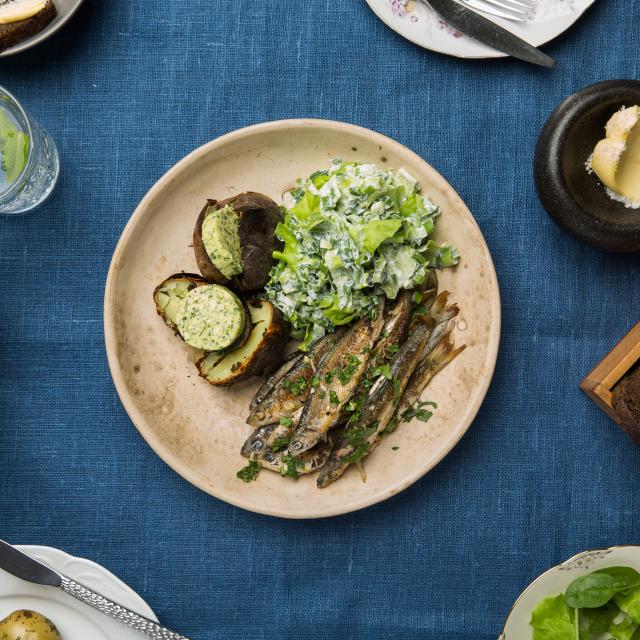Spring food

The colour of spring in Estonian kitchen is all shades of green. The mood of burgeoning nature is created by the first produce from the garden, forest or meadow: green onion, wild garlic, cucumber, salad, sorrel dock, ground elder, nettle, spruce springs. Rhubarb and radish bring spicier colours to the plate. These spring announcers are consumed as fresh as possible – in salads, on sandwiches and as garnish. Rhubarb cake and kissel became irreplaceable spring desserts long ago. Ice run marks the beginning of springtime fishing. The much-loved Baltic herring that has even been dubbed the national fish arrives from the sea to the dinner table. The flavours of springtime dishes are delicate, pure, bursting of freshness.
Even before the buds burst forth and the first green shoots appear in a sunny corner of the garden or on the forest edge, it is the time to tap birch and maple juice – these drinks have been valued choices for slaking thirst among Estonians throughout the times.
Winter stocks started to run out in spring and the food selection was poor. People tried to find additional food from the renascent nature. The wild plants that were once considered food for the times of hunger are today, however, valued for their healthiness and exciting flavours and have even found a respectable place in restaurant menus.
A few centuries ago, it was still possible to bring spring closer or extend it in Estonian manors: asparagus, radish, early potatoes and herbs were grown in the greenhouses and heated cold frames there. Many of today’s families also sow seeds in spring to be able to harvest their own produce in summer and autumn. Growing produce in pots is held in high esteem in cities as well, with herbs, spices and other toothsome stuff, such as paprika or hot chilli peppers, brought to the table this way.
Springtime fishing adds fresh fish to the menu: Baltic herring, bass, ide, roach, vimba, pike. While salted Baltic herring or small herring use to be one of the main foods in the kitchens of Estonian peasants, fresh Baltic herring is enjoyed in fried or marinated form today, with even top chefs valuing this domestic fish. Delicious whitefish which is eaten fresh with a bit of salt is also held in high esteem.
Spring has been the time for fasting and austerity, but also the time of new beginnings and nascency. Youngsters used to gather around the swing to celebrate spring holidays and young girls would bring coloured eggs to hand out to young men. Families are still happily colouring Easter eggs today – in the traditional manner with onion peel or with paint bought from the store. Influenced by the Russian cuisine, pasha has also been cooked for Easter in Estonia. Back in the day, the time in spring when cows were milked again was the beginning of the season of dairy products and dishes. Today, goat milk products are increasingly gaining popularity: cheese, curd, ice-cream, yoghurt.